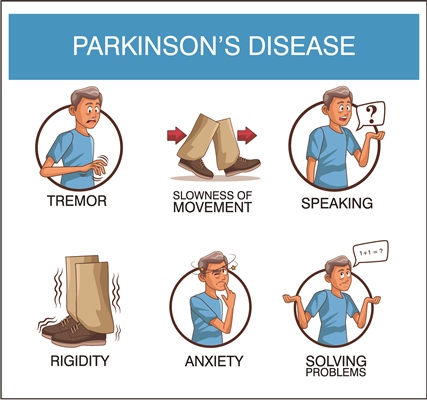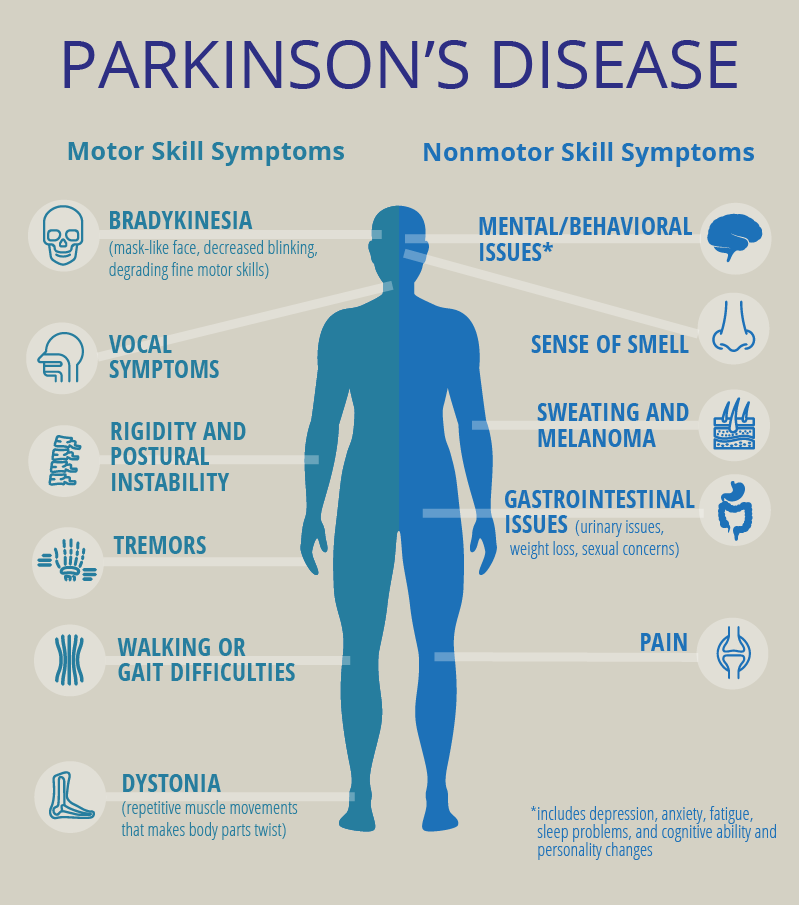Signs and Symptoms of Parkinson’s Disease

If you’ve been diagnosed with Parkinson’s disease, the first thing you should know is what it is and what it isn’t. Although the signs and symptoms of Parkinson’s disease are often non-specific, they are still associated with the disease. Your doctor can help you recognize the signs and symptoms of Parkinson’s disease and refer you to a specialist if necessary. Although you may not have any specific symptoms, you should tell your doctor about any other changes in your life.
Early symptoms of Parkinson’s can be similar to other disorders, so your doctor will run a series of imaging tests to rule out other conditions that may have similar symptoms. He or she may also want to avoid exposure to toxic materials or drugs that may be causing your symptoms. The doctor will also look for signs of tremor, muscle stiffness, and slowness of movement, which are the most common signs of this condition. In some cases, the symptoms of the disease begin when you rest or sleep.
Other signs of Parkinson’s disease include tremors and rigidity, as well as slow monotonous speech. If you notice any of these symptoms, it’s important to see a doctor to rule out other conditions or get the condition diagnosed. In some cases, surgery may even be used to treat the symptoms of Parkinson’s disease. If you experience any of these symptoms, or suspect that you may have Parkinson’s disease, contact your doctor or health website as soon as possible seewhatiseadesigns.com. He or she will be able to determine what you are experiencing and help you start treatment.
As the disease progresses, the effectiveness of drugs decreases. In the later stages of the disease, doctors change the dosage or form of the medication. Apomorphine, for example, is injected under the skin, while duodopa, a derivative of levodopa, is injected through a tube into the intestines. Medicine can be very helpful if given by a qualified doctor.

The disease is a neurodegenerative disease that affects dopamine-producing neurons in the substantia nigra. The condition is caused by genetic markers as well as environmental factors. This results in the death of dopaminergic neurons in the brain, resulting in abnormal movements. The disease usually develops in people aged 60 and older. Men are more likely to develop it than women, and it usually occurs after a stroke.
Another symptom of Parkinson’s disease is slow, unsteady movements. Some of these symptoms are tremors, rigidity, and trouble sleeping. However, you may not notice symptoms in your life if you don’t have them. It is important to see a doctor who can help you decide if you have Parkinson’s disease. If you’ve had these symptoms before, it’s worth seeking treatment.
In the early stages, the symptoms aren’t severe. However, they may make it difficult to perform daily tasks. In some cases, a trial-and-error treatment may be needed to relieve these symptoms. This is the most common form of Parkinson’s disease. Your doctor will decide on the best course of treatment for you. During this time, you can expect your doctor to change the medication you’re taking to find the best dose.
While symptoms of the disease vary from person to person, some symptoms may be subtle or even undetectable. You may not notice any symptoms during the early stages of the disease. As the condition progresses, you may notice that your movements are more shaky and tremor-free. These are all symptoms of Parkinson. While it is hard to diagnose, a doctor can help you get an accurate diagnosis and determine the cause of your problems.
Some treatments can help to control the symptoms of Parkinson’s disease. Some people may find relief from surgery. This procedure involves the placement of a small electrode in the brain. A small battery is then attached to the electrode through wires beneath the skin. While surgery is not a cure for Parkinson’s, it can help to control the symptoms of the disease. It is not a cure, but it may help to alleviate the tremor and reduce the need for medication.